We’ve been expecting a pop in US inflation over Q2 and it did not disappoint. DXY rallied as EUR fell and AUD was clobbered. That said, US yields fell, indicating that markets were expecting higher still. DXY versus EUR:
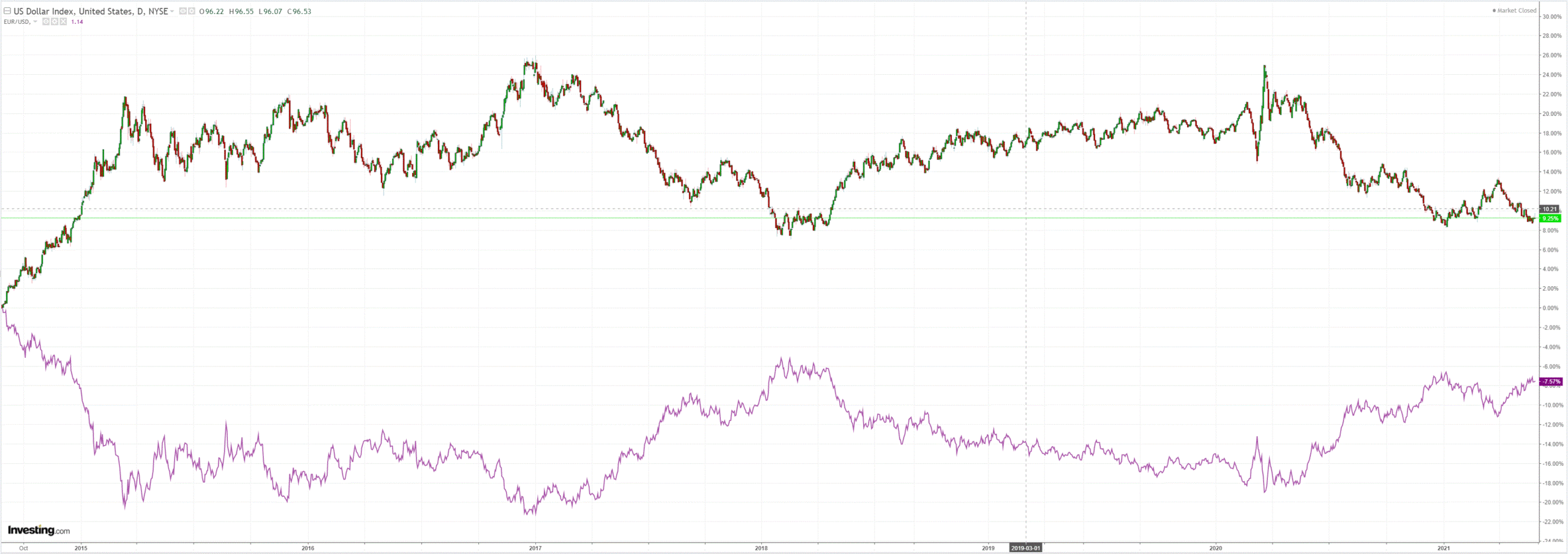
The Australian dollar was hit on all crosses:

Gold rose, oil fell:
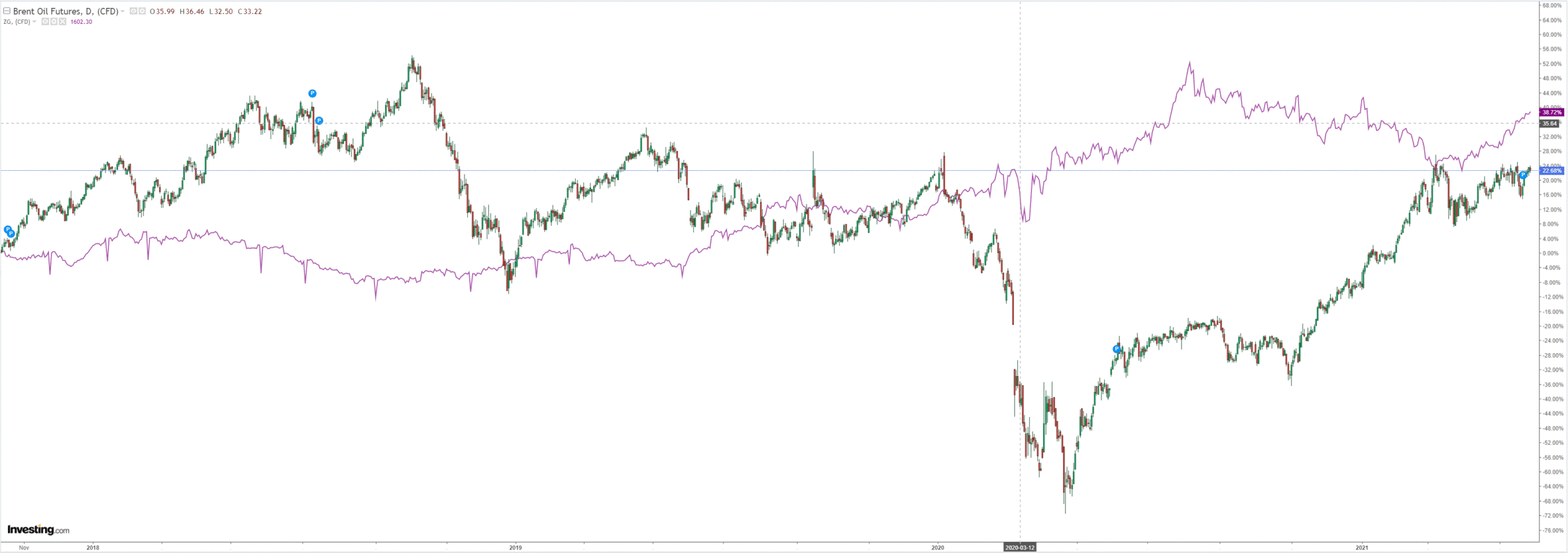
Dirt was firm:

Miners fell:
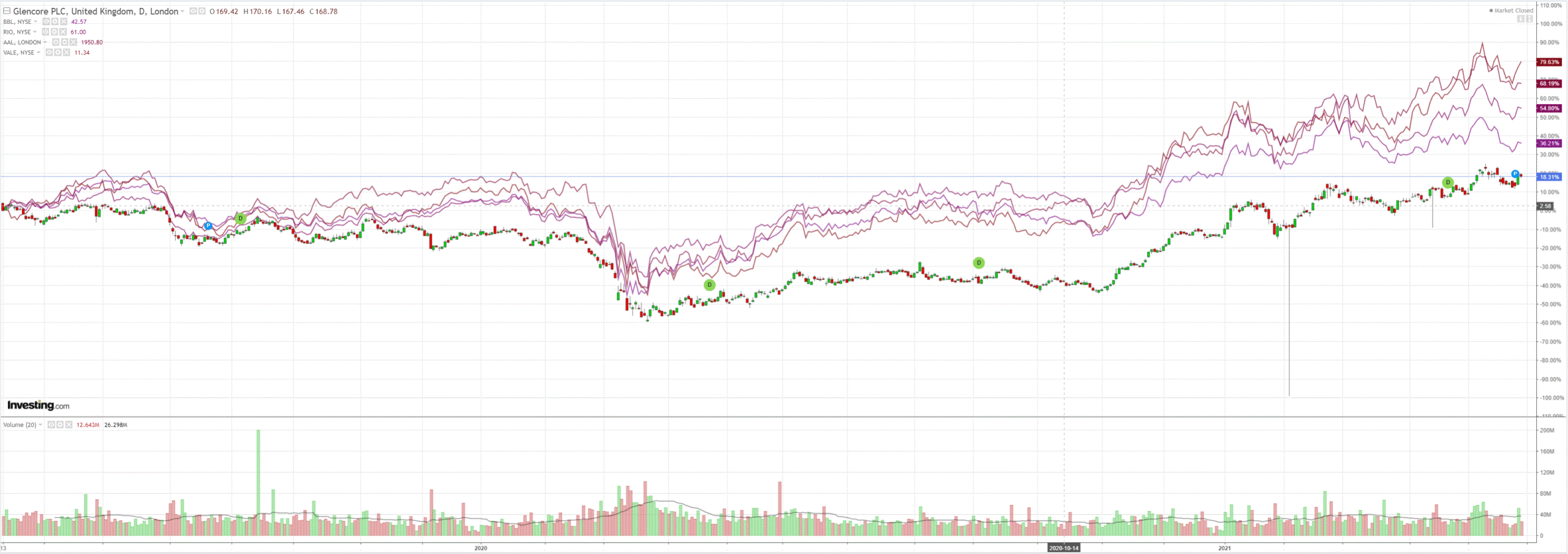
EM stocks are warming:
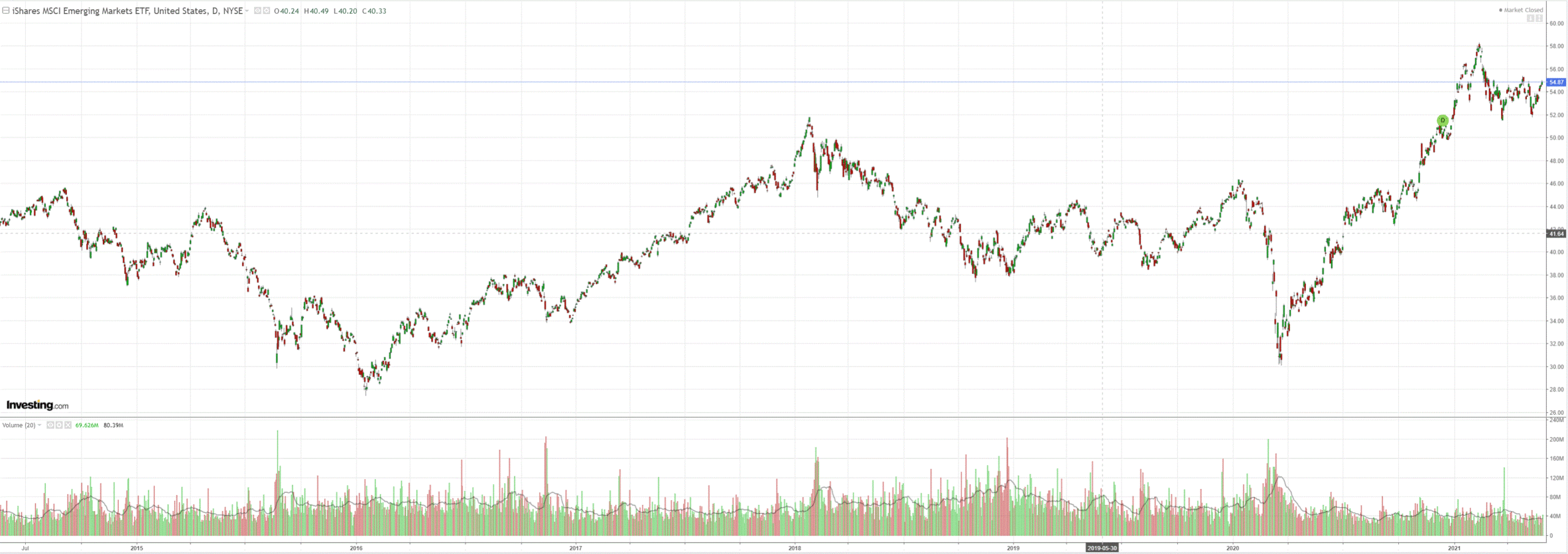
Junk is fine:
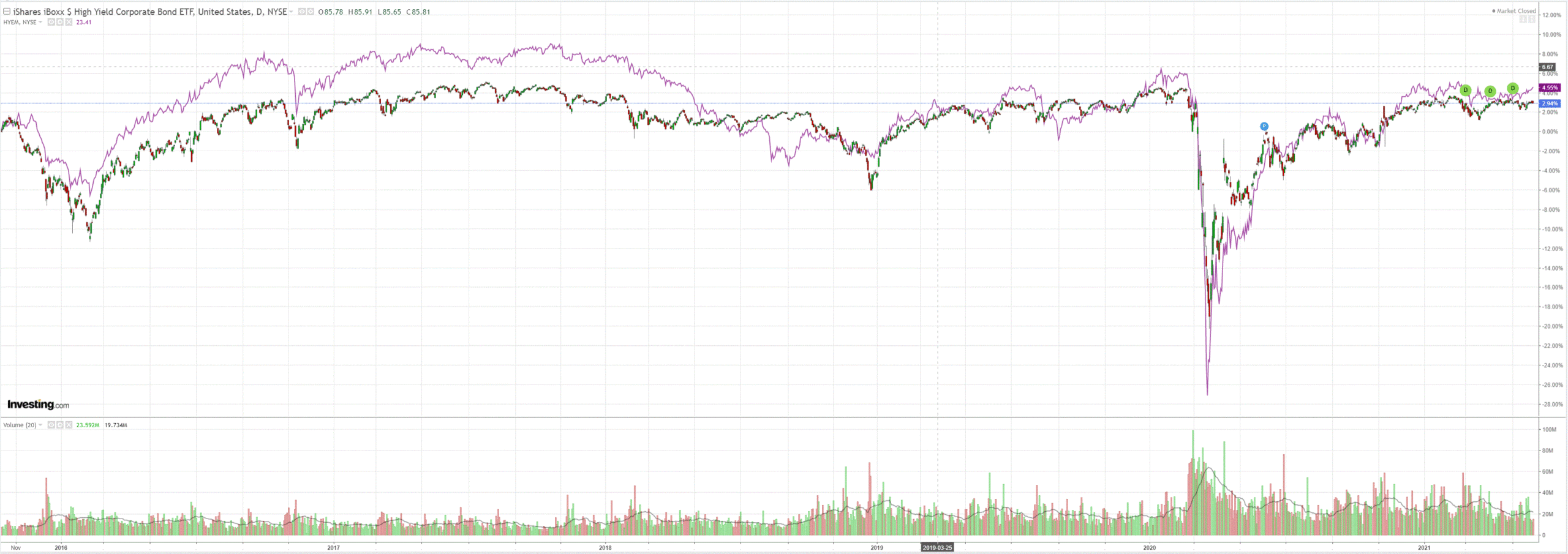
US yields ploughed lower through the inflation print:
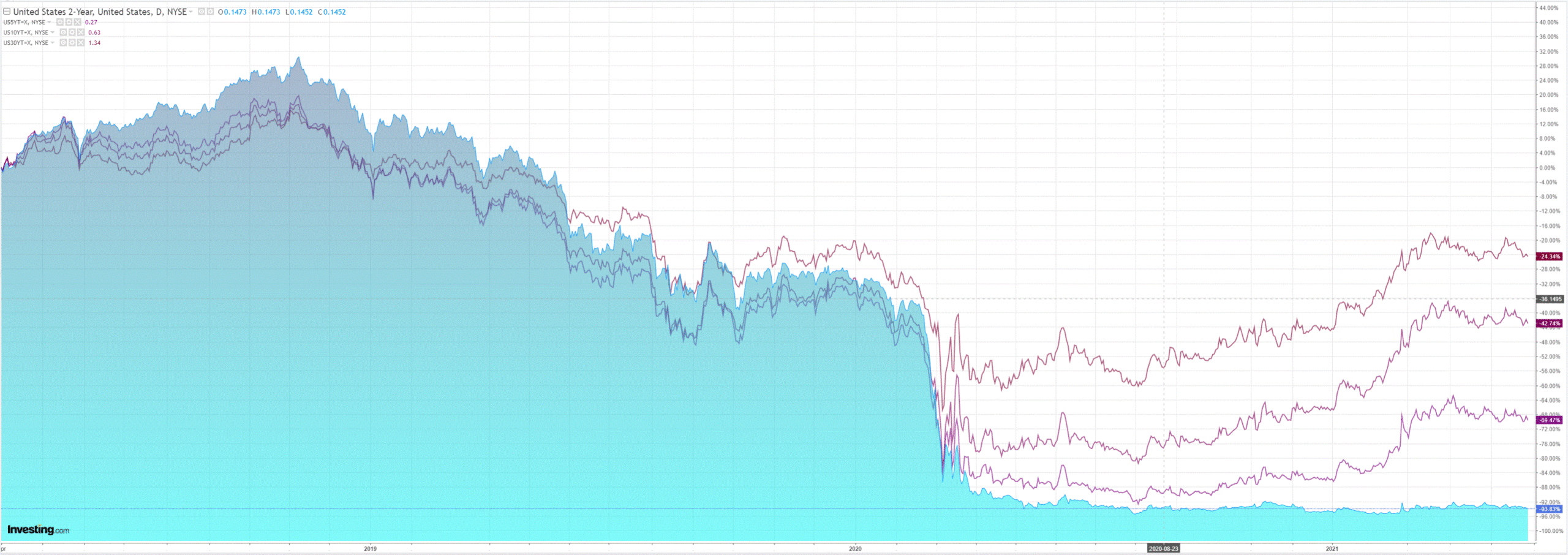
Stocks were stable:
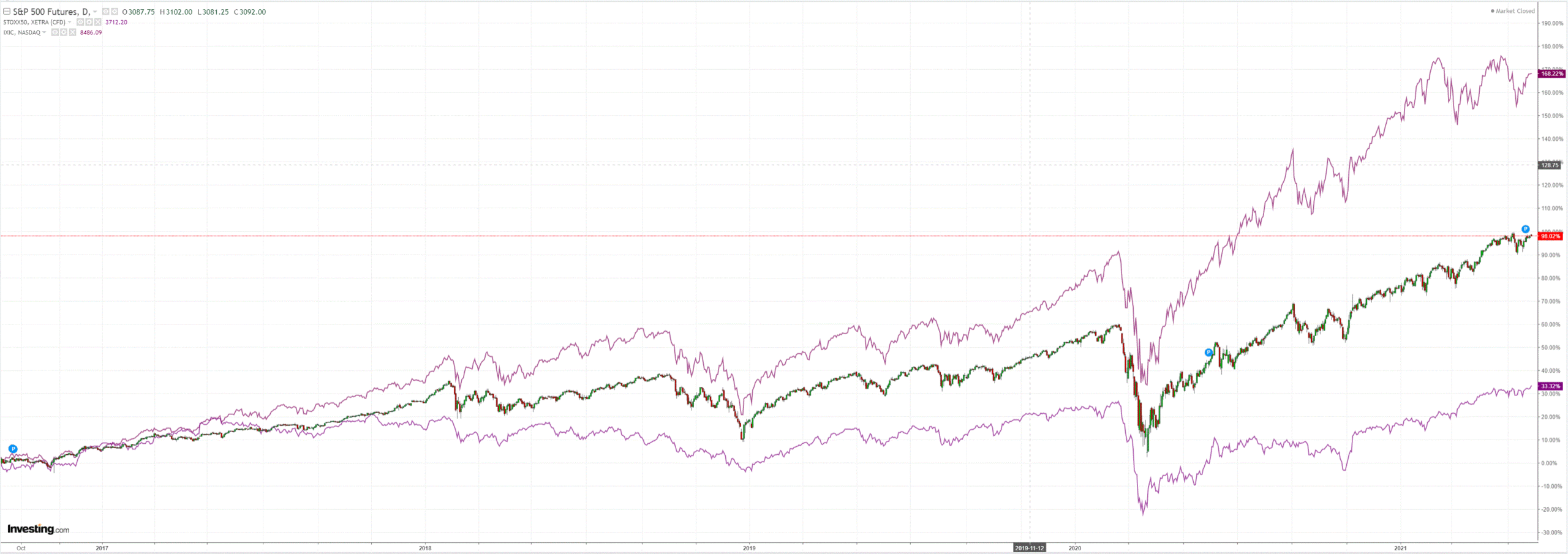
US Core PCE inflation was strong at 0.7 in April and 3.1% over the year:
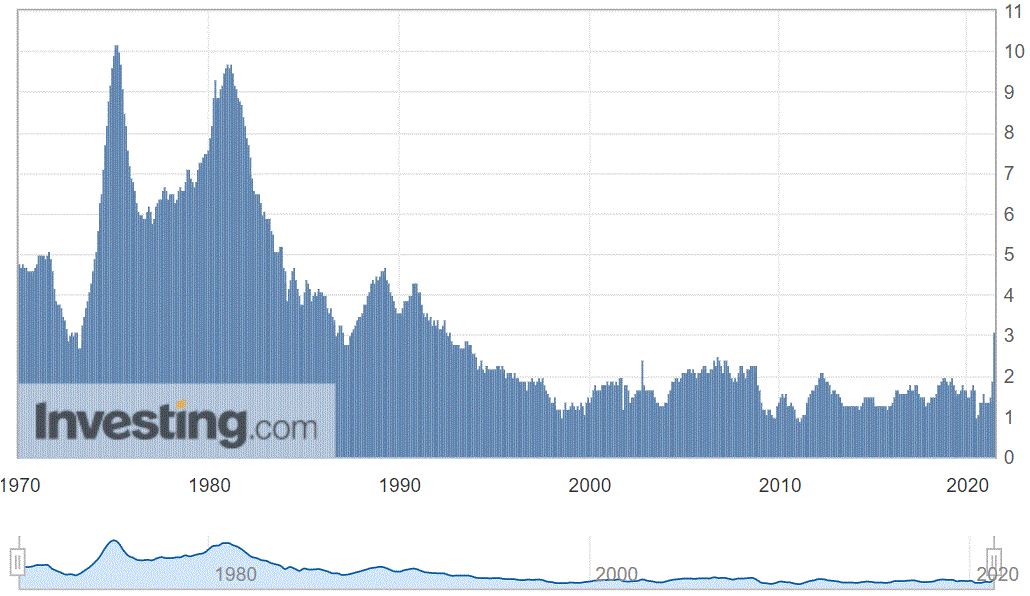
However, yields fell so markets are clearly getting the combined Fed and Chinese message that this is temporary. I agree. Credit Agricole has an interesting comment:
The outlook for central bank policies in the G10 space has started to diverge noticeably of late and this should continue to fuel demand for FX carry trades. The Norges Bank, BoC and, more recently, the RBNZsignalled that their respective tightening cycles could start in the coming months. This could continue to boost the appeal of the NOK, CAD and NZD as investment currencies. We have recently upgraded our NZDoutlook.All eyes will be on the RBA next week to see if it will join the group of‘ hawkish’ G10 central banks. While Australia’s economy is looking stronger than those of these ‘hawkish’ banks, its inflation isweaker, which gives the RBA more room to run the economy harder.
The Fed has emerged as one of the laggards in the central banks’ slog tothe exit with policymakers signalling that they will look through the latest spike in US inflation and that the US economy, while improving, is still farfrom their objectives. This made us lower our near-term forecasts for the USD vs the EUR and GBP. That said, we think that a persistent inflation overshoot and vigorous economic recovery should put the Fedon the path towards QE taper in H221. In turn, we still expect the USD to regain some composure on the back of growing UST yields.
My view is that the RBA still has oodles of wood to chop before it even considers rate hikes. All key indicators of inflation are still low and it has yet to even deploy macroprudential tools. It has ongoing lockdowns and Chinese decoupling to manage. Santander adds some more texture:
The RBA kept monetary policy unchanged in May, with both the cash rate and 3Y yield targets remaining at 0.1%. The Bank revised its annual growth forecasts higher, to 4.75% for 2021, but still considers inflation pressures subdued, and does not expect to see conditions for a rate rise until 2024 at the earliest. Despite no change in policy to lead the AUD, the Bank did confirm that it would decide whether to shift its 3Y yield target to the November 2024 bond (from the April 2024 bond currently) at its July meeting.
Some market commentators have suggested the Bank will decide against making this change, as it will not want this rate to still be at 0.1% in November 2024. While we do not disagree with this assumption, it would be relatively simple, in our view, for the Bank to shift its 3Y yield target to the November 24 bond, and then simply lift this target (to 0.25% etc.) as and when it feels such loose monetary policy is no longer needed.
In July, the RBA will also decide on whether it will undertake further quantitative easing. As the AUD200bn programme is only set to last until around September time, we believe there is a good chance of a AUD100bn extension coming.
Meanwhile, Australia-China relations have continued to deteriorate in May, with Australia reviewing Chinese ownership of Darwin port over security risks, China halting all activities under the China-Australia strategic economic dialogue(although in practice there has been no official meeting since2017), and also telling some small liquefied natural gas importers to avoid buying new cargos from Australia.
RBA to stay as dovish as humanly possible as US inflation peaks and the Chinese-led commodities bust comes crashing in.
Australian dollar to fall away as it all happens.

